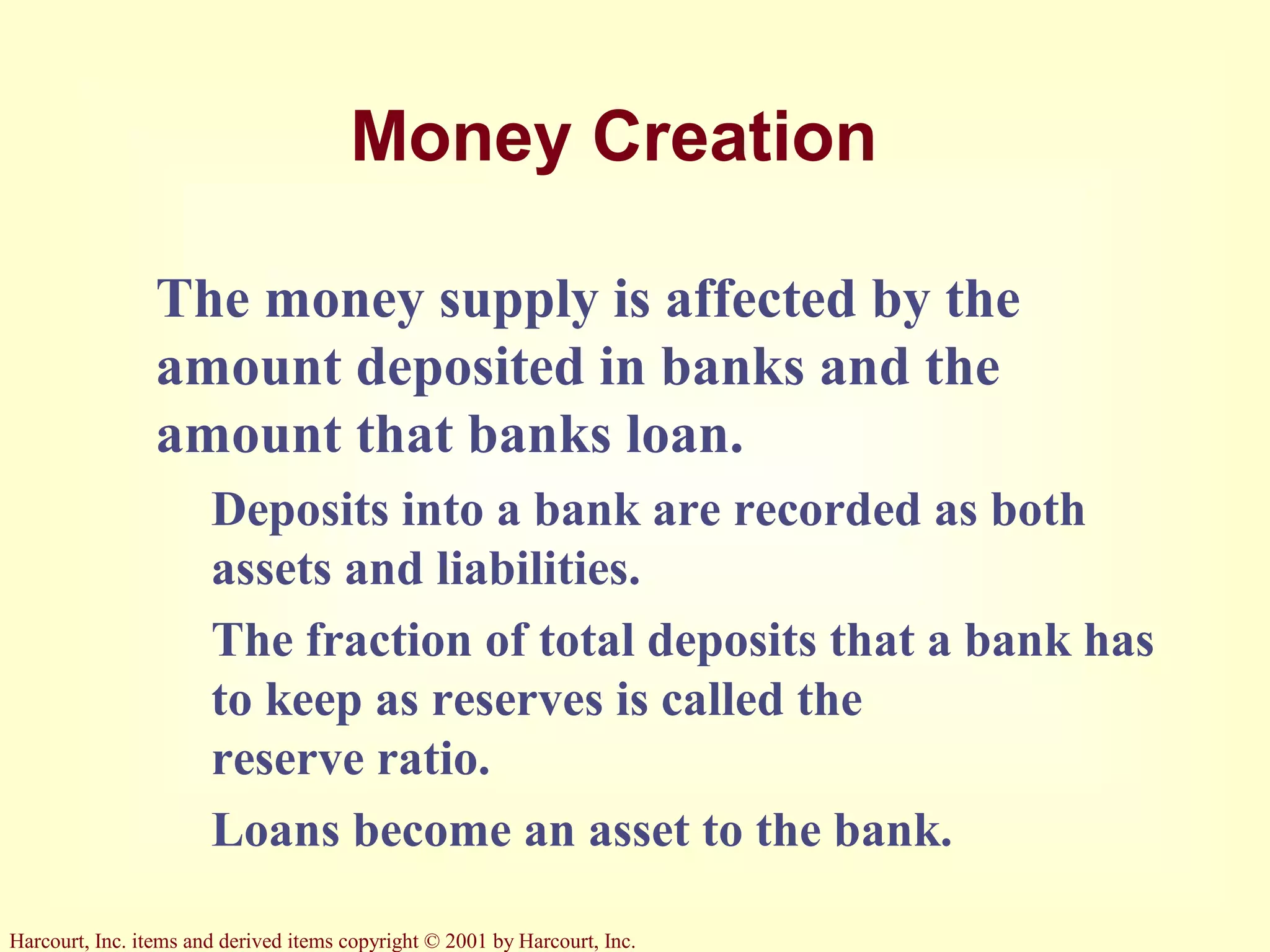The document discusses the monetary system and the role of money. It describes money as having three main functions: as a medium of exchange, a unit of account, and a store of value. It then discusses the US monetary system, the role of the Federal Reserve in regulating banks and money supply through open market operations and setting reserve requirements. Banks can expand the money supply through fractional-reserve banking and the money multiplier formula is used to calculate total money creation.



































![Harcourt, Inc. items and derived items copyright © 2001 by Harcourt, Inc.
The Money Multiplier
How much money is eventually
created in this economy?
Original deposit = $ 100.00
First National lending = $ 90.00 [=0.9 x $100.00]
Second National lending = $ 81.00 [=0.9 x $90.00]
Third National lending = $ 72.90 [=0.9 x $81.00]
↓ ↓
↓ ↓
Total money supply = $1,000](https://image.slidesharecdn.com/chap27-190228075000/75/The-Monetary-System-36-2048.jpg)








